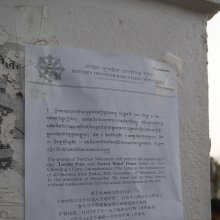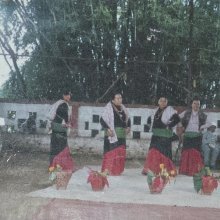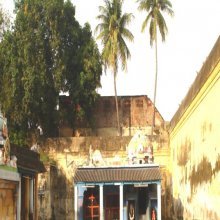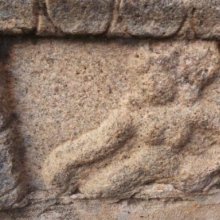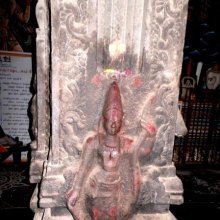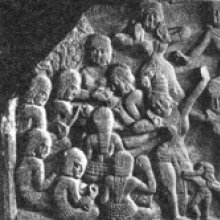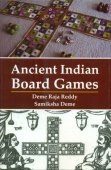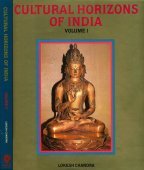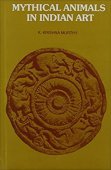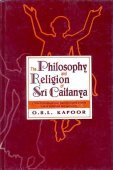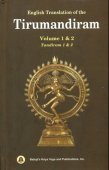Dance: 3 definitions
Introduction:
Dance means something in Hinduism, Sanskrit, the history of ancient India, Hindi. If you want to know the exact meaning, history, etymology or English translation of this term then check out the descriptions on this page. Add your comment or reference to a book if you want to contribute to this summary article.
Images (photo gallery)
(+55 more images available)
In Hinduism
Purana and Itihasa (epic history)
Source: Shodhganga: Elements of Art and Architecture in the Trtiyakhanda of the VisnudharmottarapuranaDance (in Sanskrit: Nṛtya) refers to one of the “sixty four kinds of Art”, according to the Kamasutra of Vatsyayana.—Indian tradition, basically includes sixty four Art forms are acknowledged. The history of Indian Art covers approximately five thousand years which presents a rich and almost continuous record. The references of sixty four kinds of Kala (कला, kalā) are found in the Bhagavatapurana, Shaiva-Tantras, Kamasutra of Vatsyayana etc.

The Purana (पुराण, purāṇas) refers to Sanskrit literature preserving ancient India’s vast cultural history, including historical legends, religious ceremonies, various arts and sciences. The eighteen mahapuranas total over 400,000 shlokas (metrical couplets) and date to at least several centuries BCE.
India history and geography
Source: Singhi Jain Series: Ratnaprabha-suri’s Kuvalayamala-katha (history)Dance was part of the festivities such as the Kaumudi-Mahotsava festival celebrated on the Śaratpaurṇimā in ancient India, as vividly depicted in the Kathās (narrative poems) such as Uddyotanasūri in his 8th-century Kuvalayamālā (a Prakrit Campū, similar to Kāvya poetry).—Page 103.15: Here is a reference of the Kaumudī-Mahotsava celebrated in a the city of Campā on the Śaratpaurṇimā day (line 32). It was attended by great festivities of music, dance and drama. In the city-square a Naṭa gave demonstration of his dance. The Naṭa is called Bharata-putra, i.e., the follower of Bharata or an adept in Nāṭya-śāstra.

The history of India traces the identification of countries, villages, towns and other regions of India, as well as mythology, zoology, royal dynasties, rulers, tribes, local festivities and traditions and regional languages. Ancient India enjoyed religious freedom and encourages the path of Dharma, a concept common to Buddhism, Hinduism, and Jainism.
Languages of India and abroad
Hindi dictionary
Source: DDSA: A practical Hindi-English dictionaryDance in Hindi refers in English to:—(nm) a kind of large-sized mosquito..—dance (डांस) is alternatively transliterated as Ḍāṃsa.
...
See also (Relevant definitions)
Starts with: Dancelo, Danceolo, Dancer.
Ends with: Abundance, Bamboo dance, Indian classical dance, Kadamce.
Full-text (+2401): Nritya, Lasya, Tandava, Pindibandha, Virajayantika, Naca, Nritta, Nartana, Galitaka, Nrit, Nat, Pranrit, Dolapada, Talamukha, Urdhvajanu, Nartita, Karihasta, Upanrit, Gitanritya, Lasyanga.
Relevant text
Search found 228 books and stories containing Dance; (plurals include: Dances). You can also click to the full overview containing English textual excerpts. Below are direct links for the most relevant articles:
Vision of the Sacred Dance < [April – June, 1984]
The Vision of the Sacred Dance-II < [July – September, 1984]
The Vision of the Sacred Dance-III < [October – December, 1984]
Vishnudharmottara Purana (Art and Architecture) (by Bhagyashree Sarma)
2. The Viṣṇudharmottara-purāṇa and the Indian Classical Dances < [Chapter 6 - Modern Relevance of Different Art Forms and Architecture]
2.3. Standing Postures < [Chapter 3 - Drama and Dance]
1.4. Types of Drama < [Chapter 3 - Drama and Dance]
The Religion and Philosophy of Tevaram (Thevaram) (by M. A. Dorai Rangaswamy)
Chapter 4.3 - (a) Nataraja (the dance of Shiva) < [Volume 2 - Nampi Arurar and Mythology]
Chapter 4.3 - (f) The transcendental and immanent Dance < [Volume 2 - Nampi Arurar and Mythology]
Chapter 4.3 - (e) Arurar’s references to Dance < [Volume 2 - Nampi Arurar and Mythology]
Gati in Theory and Practice (by Dr. Sujatha Mohan)
Gati in folk dances of Andhra < [Chapter 4 - Practice of Gati]
Observations and findings on the practice of Gati < [Chapter 4 - Practice of Gati]
Gati in classical form of Mohiniāṭṭam < [Chapter 4 - Practice of Gati]
Chaitanya Bhagavata (by Bhumipati Dāsa)
Verse 1.1.86 < [Chapter 1 - Summary of Lord Gaura’s Pastimes]
Verse 1.16.230-231 < [Chapter 16 - The Glories of Śrī Haridāsa Ṭhākura]
Verse 2.8.190 < [Chapter 8 - The Manifestation of Opulences]
Related products
